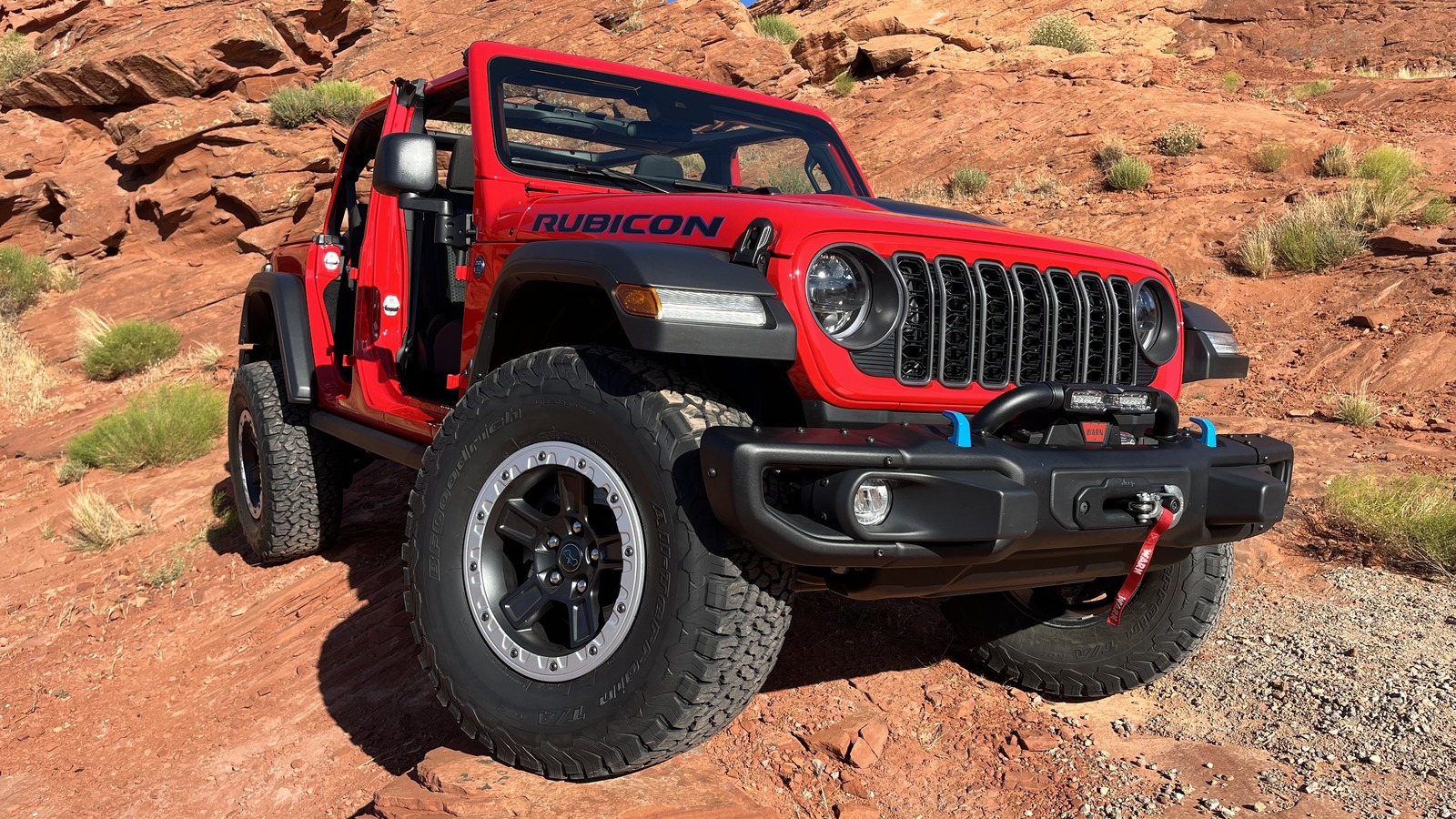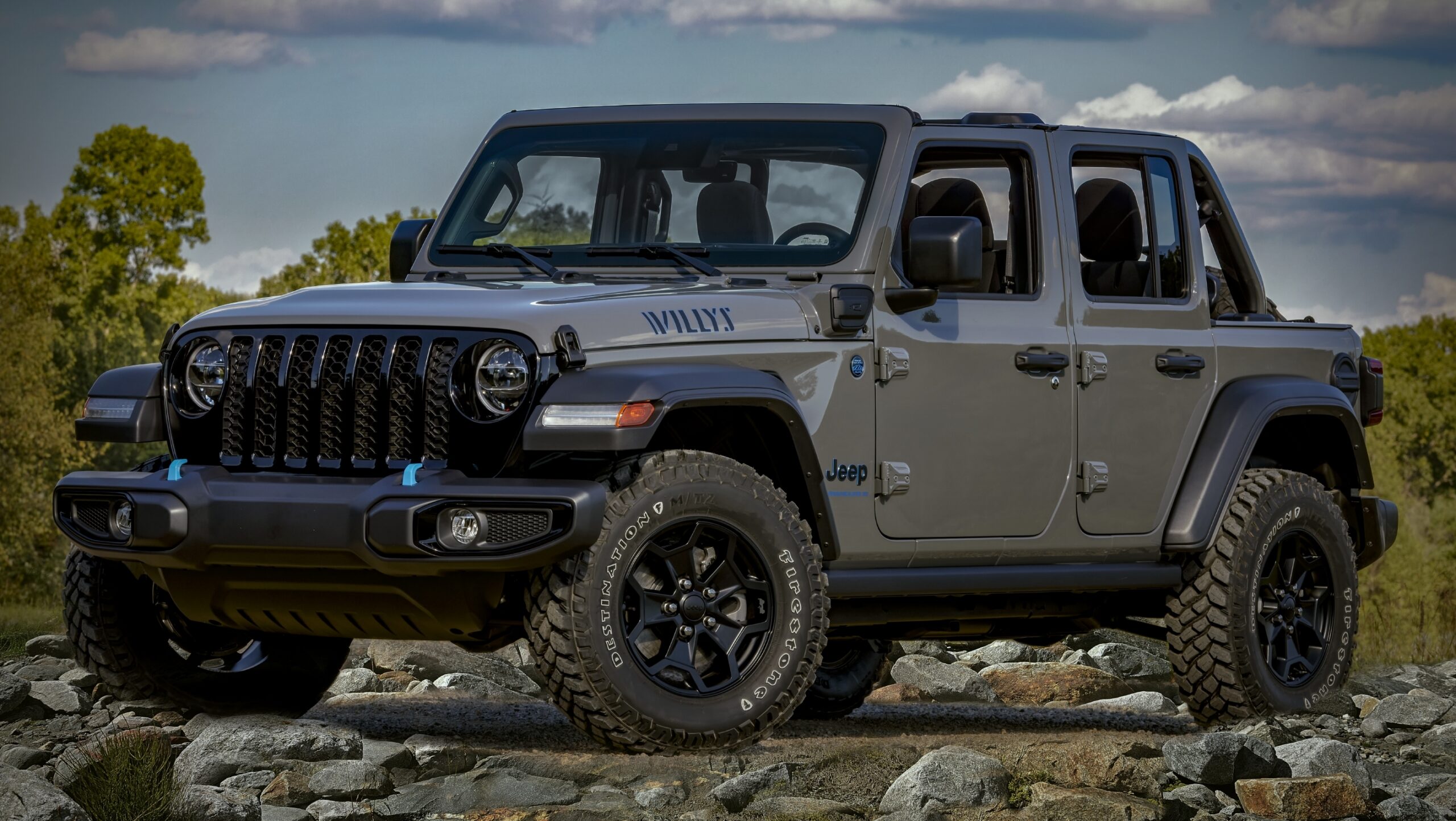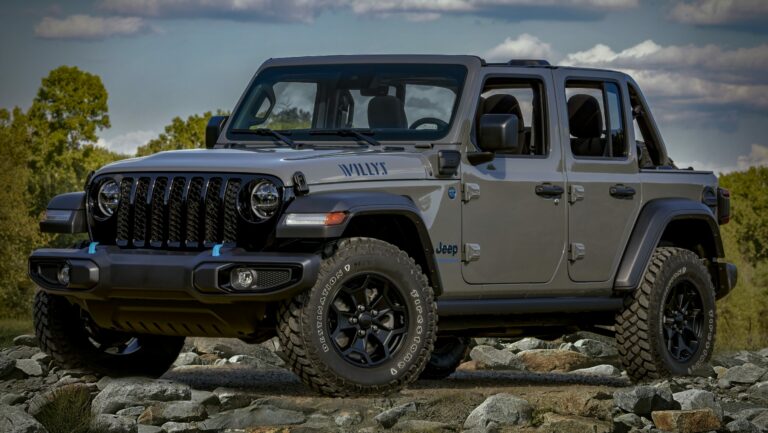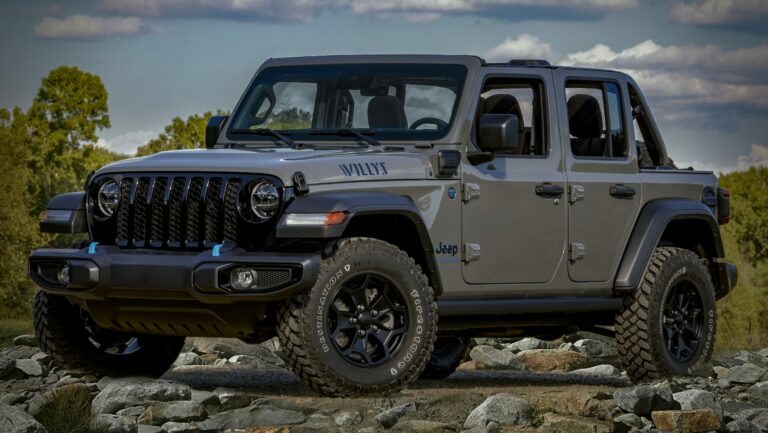Jeep Wrangler 2 Door In Snow: Conquering Winter’s Embrace
Jeep Wrangler 2 Door In Snow: Conquering Winter’s Embrace jeeps.truckstrend.com
The iconic Jeep Wrangler, particularly its nimble 2-door variant, embodies a spirit of adventure and rugged capability that few vehicles can match. While often associated with sun-drenched trails and rock crawling, the 2-door Wrangler truly comes alive when winter blankets the landscape in a pristine layer of snow and ice. Driving a Jeep Wrangler 2-door in snow is not just about getting from point A to point B; it’s an experience, a testament to the vehicle’s legendary off-road prowess, and a challenge that, with the right preparation and technique, can be both exhilarating and incredibly rewarding. This comprehensive guide will delve into everything you need to know about navigating winter’s icy grip with your 2-door Wrangler, from essential preparations to advanced driving tips and common considerations.
The 2-Door Wrangler’s Winter DNA: Built for the White Stuff
Jeep Wrangler 2 Door In Snow: Conquering Winter’s Embrace
At its core, the Jeep Wrangler 2-door is engineered for challenging terrain, and snow is no exception. Its fundamental design elements make it inherently capable in wintry conditions:
- Robust 4×4 Systems: Modern Wranglers come equipped with sophisticated 4×4 systems (like Command-Trac or Rock-Trac, depending on the trim) that allow drivers to seamlessly switch between 2WD, 4H (part-time or full-time), and 4L. This adaptability is crucial for varying snow depths and traction levels.
- High Ground Clearance: With ample clearance, the Wrangler can easily float over moderate snow depths, preventing its undercarriage from dragging and getting stuck.
- Short Wheelbase: This is where the 2-door truly shines in specific snowy scenarios. A shorter wheelbase enhances maneuverability, allowing the vehicle to navigate tighter turns and switchbacks on snowy trails or in congested, snow-covered urban environments. It also reduces the risk of "high-centering" on snowdrifts, where the vehicle’s middle gets stuck on a mound.
- Solid Axles: While perhaps less relevant for everyday road driving, solid axles offer superior articulation and durability in extreme off-road conditions, which can include deep, uneven snow.
- Torque and Power: Jeep engines, whether the venerable 3.6L Pentastar V6, the torquey 2.0L turbo, or the powerful 392 V8, provide ample power to spin through snow and maintain momentum.
![]()
These attributes combine to create a vehicle that, when properly equipped and driven, can tackle snowy roads and trails with remarkable confidence.
Essential Preparations for Snow Driving
Before you venture out into a winter wonderland, proper preparation is paramount. This isn’t just about convenience; it’s about safety and ensuring your Wrangler performs optimally.
- Tires: Your Most Crucial Ally: This cannot be stressed enough. All the 4×4 capability in the world is useless without adequate tire traction.
- All-Terrain (A/T) Tires: Many Wranglers come with A/T tires, which offer a decent compromise for light to moderate snow and slush, especially those with an M+S (Mud and Snow) rating.
- Dedicated Winter (Snow) Tires: For regions experiencing heavy snowfall, icy conditions, or sustained sub-zero temperatures, dedicated winter tires are a game-changer. Their softer rubber compound stays pliable in cold weather, and their aggressive tread patterns with sipes provide superior grip on snow and ice.
- Tire Pressure: Check tire pressure regularly as cold weather causes pressure to drop. Proper inflation ensures optimal contact patch and handling.
- Fluids Check:
- Antifreeze: Ensure your coolant mixture is appropriate for extreme cold to prevent freezing and engine damage.
- Washer Fluid: Use winter-specific washer fluid that won’t freeze and can effectively clear slush and salt spray.
- Engine Oil: While less critical for modern engines, ensure your oil is suitable for cold starts.
- Battery Health: Cold weather significantly impacts battery performance. Have your battery tested to ensure it has enough cold-cranking amps (CCA) to reliably start in freezing temperatures.
- Wipers and Lights:
- Winter Wipers: Consider installing winter-specific wiper blades that are more robust and less prone to icing up.
- Headlights/Fog Lights: Ensure all lights are clean and fully functional. Consider upgrading to LED lights for better visibility in snowy conditions.
- Emergency Kit: A well-stocked kit is essential for any winter driver, especially in a vehicle designed for off-road excursions. Include:
- Shovel (collapsible)
- Tow strap/recovery rope
- Jumper cables
- First-aid kit
- Warm blankets/extra clothing
- Non-perishable food and water
- Flashlight with extra batteries
- Sand, cat litter, or traction boards for grip
- Phone charger and portable power bank

Driving Techniques in Snow with a 2-Door Wrangler
Mastering winter driving in a 2-door Wrangler involves a blend of understanding its capabilities and employing safe, deliberate techniques.
- Engaging 4WD:
- 2H (Two-Wheel Drive High): Use this on clear, dry pavement to save fuel. Never use 2H on slippery surfaces like snow or ice, as it directs power only to the rear wheels, making the lighter rear end of the 2-door more prone to losing traction and fishtailing.
- 4H (Four-Wheel Drive High): This is your go-to for most snowy conditions. Use it on roads with light to moderate snow, slush, or icy patches. It provides power to all four wheels, significantly improving traction and stability. For part-time 4×4 systems (like Command-Trac), only engage 4H when there’s sufficient slip (i.e., not on dry pavement), as it locks the front and rear driveshafts, which can cause driveline binding on high-traction surfaces. Some Wranglers (like Rubicon and Sahara) offer full-time 4WD (4H Auto), which can be used on all surfaces as it has a differential that allows for speed differences between the axles.
- 4L (Four-Wheel Drive Low): Reserve 4L for extremely deep snow, steep snowy inclines, or very low-speed crawling where maximum torque and traction are needed. It significantly multiplies torque and should only be used at very slow speeds.
- Gentle Inputs: The golden rule of winter driving: be smooth.
- Acceleration: Accelerate slowly and gradually to prevent wheel spin.
- Braking: Brake early and gently. Avoid sudden, hard braking that can lock up wheels (even with ABS) and lead to a skid. Use engine braking (downshifting) to help slow down.
- Steering: Make small, deliberate steering inputs. Jerking the wheel can easily cause a loss of control on slick surfaces.
- Anticipation and Space: Look far ahead to anticipate potential hazards like icy patches, drifts, or stopped traffic. Increase your following distance significantly – at least 8-10 seconds on snowy roads.
- Understanding Traction Control and ABS: Modern Wranglers come with these electronic aids. Let them work! If you feel the wheels slip, the traction control system will intervene to regain grip. If you brake hard, the ABS will prevent the wheels from locking, allowing you to maintain steering control. Don’t fight these systems.
- Dealing with Drifts and Deep Snow: The 2-door’s shorter wheelbase can be an advantage here, making it less likely to get high-centered. Maintain steady momentum, but don’t over-accelerate. If you feel the vehicle slowing significantly, ease off the gas and try to reverse out or rock the vehicle back and forth gently (if safe to do so).
Advantages of the 2-Door Wrangler in Snow
While both 2-door and 4-door Wranglers are excellent in snow, the 2-door offers specific benefits:
- Superior Maneuverability: Its tighter turning radius and smaller footprint make it incredibly agile in snowy parking lots, narrow trails, or congested city streets where space is limited.
- Reduced High-Centering Risk: The shorter wheelbase significantly lowers the chance of getting stuck on the belly pan when crossing over snowdrifts or uneven snowy terrain.
- Lighter Weight: While not a massive difference, the 2-door is generally lighter, which can sometimes aid in "floating" over deeper snow rather than sinking in, especially with wider tires.
- Classic Appeal: Let’s be honest, there’s an undeniable cool factor to a 2-door Wrangler plowing through fresh snow, embodying the essence of rugged winter adventure.
Challenges and Considerations for the 2-Door Wrangler in Snow
No vehicle is perfect, and the 2-door Wrangler does present a few considerations in winter:
- Less Stable at High Speeds: The shorter wheelbase, while great for maneuverability, can lead to a slightly "choppier" ride and potentially less straight-line stability at higher speeds on slick, open roads compared to its longer 4-door sibling. Drivers need to be more attentive to steering corrections.
- Lighter Rear End: With less weight over the rear axle (especially when empty), the 2-door’s rear can be more prone to losing traction and fishtailing under aggressive acceleration or braking if 2WD is used on slippery surfaces. Always use 4H in such conditions.
- Interior Space: While not a performance issue, the limited cargo space and rear passenger room can be a challenge if you’re carrying a lot of winter gear or multiple passengers.
- Corrosion: Like any vehicle exposed to road salt, Wranglers are susceptible to rust. The frame and undercarriage components require regular cleaning.
Recommended Upgrades for Winter Wheeling
For those who plan to regularly tackle serious winter conditions, a few upgrades can enhance your 2-door Wrangler’s capabilities and safety:
- Winch and Recovery Gear: An essential for deep snow adventures. A front-mounted winch, along with shackles, tree straps, and recovery ropes, can get you (or others) unstuck.
- Upgraded Lighting: LED light bars or auxiliary fog lights can significantly improve visibility during blizzards or dark winter nights.
- Heated Seats and Steering Wheel: If not factory-equipped, these provide immense comfort in freezing temperatures.
- Lift Kit: For those regularly encountering very deep snow, a mild lift kit combined with larger tires can increase ground clearance even further.
- Underbody Protection: Skid plates can protect vital components from ice chunks or hidden obstacles.
Maintenance Tips for Winter
Winter driving is harsh on vehicles. Proactive maintenance will extend your Wrangler’s life and ensure reliability.
- Regular Washes: Frequent washing, especially the undercarriage, is crucial to remove corrosive road salt.
- Tire Pressure Monitoring: Check tire pressure weekly as cold temperatures cause it to drop.
- Inspect Brakes and Suspension: Salt and grime can accelerate wear on brake components and suspension bushings. Inspect them regularly.
- Rust Proofing: Consider professional rust-proofing treatments for the frame and underbody.
Practical Advice and Actionable Insights
- Know Your Jeep, Know Your Limits: Understand your Wrangler’s capabilities and, more importantly, your own driving skill level. Don’t push beyond your comfort zone.
- Practice in a Safe Area: If you’re new to winter driving or a Wrangler, find a large, empty, snow-covered parking lot to practice engaging 4WD, gentle braking, and recovering from minor skids.
- Never Overestimate Traction: Even with 4WD and winter tires, traction can disappear in an instant on black ice. Assume all slick surfaces are frictionless.
- Travel with a Buddy: If venturing into remote or deep snow conditions, always travel with another capable 4×4 vehicle.
- Charge Your Phone: Always have a fully charged phone and a portable charger in case of emergencies.
Conclusion
The Jeep Wrangler 2-door is an undeniably potent and incredibly fun vehicle to drive in snow. Its compact size, robust 4×4 systems, and inherent off-road design make it an excellent choice for navigating winter’s challenges. With diligent preparation, the right tires, and a mindful approach to driving techniques, the 2-door Wrangler transforms from a mere mode of transport into a capable and exhilarating companion, ready to conquer blizzards, icy roads, and untouched snowy trails. It’s more than just a vehicle; it’s an invitation to embrace the adventure of winter.
Jeep Wrangler 2-Door Price Guide (Example Starting MSRPs for Snow-Capable Trims)
Note: Prices are approximate Starting MSRPs for new vehicles in late 2023/early 2024 and do not include destination charges, options, taxes, or dealer fees. Actual prices may vary. Snow performance is heavily dependent on tire choice and driver skill, regardless of trim.
| Trim Level | Approximate Starting MSRP | Key Features (Relevant to Winter/Off-Road) | Best For |
|---|---|---|---|
| Sport | $32,000 | Command-Trac Part-Time 4×4, Solid Axles, Good Ground Clearance | Budget-conscious buyer, general snow commuting, light off-roading |
| Willys | $38,000 | Command-Trac 4×4, Trac-Lok Limited-Slip Rear Diff, 32-inch Mud-Terrain Tires | Enhanced off-road capability, more aggressive stance, moderate snow trails |
| Rubicon | $46,000 | Rock-Trac 4×4 (4:1 low range), Electronic Front/Rear Lockers, Sway Bar Disconnect, 33-inch All-Terrain Tires | Serious off-roading, deep snow, extreme winter conditions |
| Rubicon 392 | $90,000 | 6.4L HEMI V8, Full-Time 4×4, Heavy-Duty Drivetrain, 33-inch All-Terrain Tires | Ultimate power and capability, high-performance winter driving |
Frequently Asked Questions (FAQ) about Jeep Wrangler 2 Door In Snow
Q1: Is the 2-door Jeep Wrangler good in snow?
A1: Yes, absolutely! With its robust 4×4 system, high ground clearance, and nimble short wheelbase, the 2-door Wrangler is inherently very capable in snow. However, its performance heavily relies on having the right tires (winter tires are highly recommended) and employing proper winter driving techniques.
Q2: Do I need special tires for my 2-door Wrangler to drive in snow?
A2: While all-terrain tires with an M+S rating can handle light to moderate snow, dedicated winter (snow) tires are strongly recommended for regions with heavy snowfall, icy conditions, or sustained cold temperatures. Winter tires provide superior grip, braking, and handling on snow and ice.
Q3: Which 4×4 mode should I use in snow with my 2-door Wrangler?
A3: For most snowy road conditions (light to moderate snow, slush), use 4H (Four-Wheel Drive High). For extremely deep snow, steep snowy inclines, or very low-speed crawling, engage 4L (Four-Wheel Drive Low). Avoid using 2H on slippery surfaces, as it can lead to a loss of traction in the rear-wheel-drive 2-door Wrangler. If your Wrangler has a full-time 4WD system (like 4H Auto), you can use that on all surfaces, including dry pavement.
Q4: Is a 2-door Wrangler better than a 4-door Wrangler in snow?
A4: Both are excellent in snow. The 2-door Wrangler’s key advantage is its shorter wheelbase, which makes it more maneuverable in tight spaces and less prone to "high-centering" on snowdrifts. However, the 4-door Wrangler’s longer wheelbase offers slightly more stability at higher speeds on open, slick roads. The "better" choice often comes down to specific driving conditions and personal preference.
Q5: What are the main challenges of driving a 2-door Wrangler in snow?
A5: The primary challenges include the shorter wheelbase potentially leading to a choppier ride and slightly less stability at higher speeds on slick roads (compared to a 4-door), and its lighter rear end being more prone to fishtailing if 2WD is used on slippery surfaces or aggressive inputs are made. Proper tire choice and driving technique mitigate these issues.
Q6: Can I take the doors off my Wrangler in winter?
A6: While technically possible, it is not advisable for safety or comfort. Driving without doors in freezing temperatures or snowy conditions would expose occupants to extreme cold, wind, and precipitation, making it dangerous and impractical.
Q7: How do I prevent rust on my 2-door Wrangler from road salt?
A7: Regular washing, especially focusing on the undercarriage, is crucial to remove corrosive road salt. Consider applying a rust-proofing treatment to the frame and underbody before winter, and touch up any paint chips promptly.







